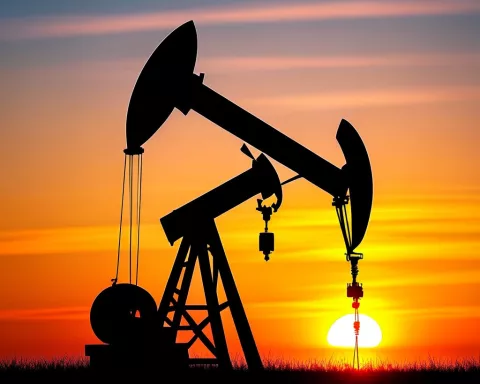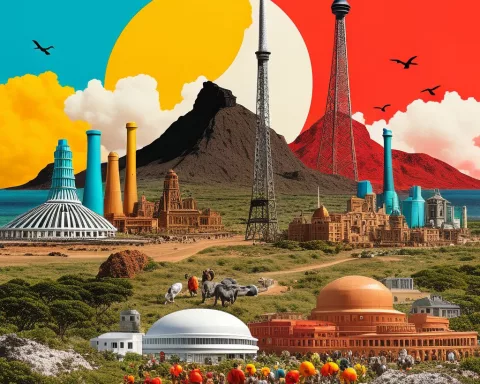Fuel prices in South Africa are set to rise slightly as March 2025 approaches, influenced by global oil supply, local economic policies, and international events. Petrol 93 will increase by 23 cents per liter, while Diesel prices will show mixed changes. These price shifts are not just numbers; they affect everyday life, from grocery costs to transportation. Despite the challenges, South Africans are finding creative solutions, like using local transport cooperatives and exploring renewable energy, to adapt to these changes and navigate the unpredictable fuel market.
What Factors Influence Fuel Prices in South Africa?
Fuel prices in South Africa are influenced by several key factors:
– Global Oil Supply and Demand: Fluctuations in production and consumption affect prices.
– Geopolitical Events: International politics, like trade negotiations and conflicts, can cause price volatility.
– Local Economic Policies: National regulations and taxes impact the final cost to consumers.
Understanding these factors is essential for navigating fuel price changes.
The global economic landscape is constantly evolving, and within it, the shifts in fuel prices command the attention of both policymakers and ordinary citizens. As March 2025 approaches, South Africa braces for a slight increase in petrol prices, according to insights from the Central Energy Fund (CEF). However, in the unpredictable realm of global oil, a sudden surge remains a possibility, reminding us of the ever-present volatility in this sector.
The Numbers Behind the Price Adjustments
The CEF’s data offers a detailed look at the anticipated changes in fuel costs. Petrol 93 is expected to rise by 23 cents per liter, and Petrol 95 by 10 cents per liter. Diesel prices present a mixed scenario: Diesel 0.05% will see a modest increase of 4 cents per liter, while Diesel 0.005% will slightly decrease by 3 cents per liter. Illuminating paraffin, essential for many households, is projected to go up by 16 cents per liter. These numbers, while informative, are provisional and may change due to the global market’s unpredictable nature.
Understanding these price shifts and their broader implications is crucial for consumers and businesses alike. Fuel costs extend beyond the gas station; they impact transportation expenses, the cost of goods, and family budgets. The adjustments reflect a complex web of factors, including global oil supply, demand changes, geopolitical tensions, and local economic policies. Historically, fuel prices have served as indicators of broader economic health, highlighting their significance in the global economic landscape.
The Influence of Global Politics
International politics plays a significant role in shaping fuel prices. Decisions made by global leaders, such as former U.S. President Donald Trump, have historically sent shockwaves through the global markets. Trump’s unpredictable policies, characterized by unilateral approaches, often left markets in a state of uncertainty. His administration’s positions on international trade, the Iran nuclear deal, and negotiations with OPEC are just a few examples of how political moves can impact economies far beyond the United States.
The CEF’s projections, while valuable, do not provide a definitive picture. They offer glimpses into potential trends but fall short of predicting exact outcomes. This uncertainty underscores the dynamic nature of global oil markets, where minor changes in production or consumption can have significant impacts. The Department of Petroleum and Mineral Resources will release the final figures shortly before they take effect, emphasizing the sector’s volatility and rapid shifts.
Historically, the rollercoaster of oil prices has demonstrated how political decisions can challenge economies. The 1973 oil crisis serves as a stark reminder of this, causing widespread economic turmoil rooted in geopolitical tensions. Although technology and diversification have mitigated some risks today, the fundamental challenges of dependency persist, shaping the economic landscape.
The South African Experience
South Africa, with its unique socio-economic context, feels these price fluctuations deeply. Changes in fuel costs ripple through the economy, affecting transportation, agriculture, and manufacturing sectors. For households already facing economic hardships, even minor price hikes can strain budgets, especially for those dependent on paraffin for heating and cooking.
Despite these challenges, stories of resilience and adaptation emerge. Local transportation cooperatives have developed to offer cost-effective travel solutions in response to rising fuel costs, showcasing community ingenuity. Additionally, there’s a growing interest in renewable energy sources as both communities and businesses seek to insulate themselves from the unpredictability of the oil market. These narratives reflect the adaptability within the South African context and align with a global shift towards sustainable energy practices.
Artistic movements have long mirrored societal changes, and the narrative of oil is no exception. The Industrial Revolution, powered by coal and later oil, inspired artistic expressions capturing the era’s spirit of innovation and conflict. Today’s conversation around fuel and energy resonates in contemporary art and literature, reflecting society’s anxieties and aspirations in the face of climate change and resource scarcity.
The Road Ahead
As March 2025 approaches, the evolving story of South Africa’s fuel prices serves as a microcosm of larger global dynamics. It illustrates a tale of interconnectedness, where local economies feel the reverberations of distant political decisions and market shifts. While immediate forecasts suggest moderate adjustments, the underlying narrative is one of vigilance and adaptation in a constantly changing world.
This anticipation and preparation exemplify the enduring human spirit, continually navigating the intricate choreography of global economics. As consumers and policymakers prepare for the changes ahead, the ongoing narrative of oil serves as a reminder of our shared global journey, influenced by both local and international decisions. In this complex narrative, resilience and adaptability remain key, guiding us through the uncertainties of the global economic landscape.
“`markdown
What is the expected change in petrol prices in South Africa as March 2025 approaches?
Petrol 93 is expected to rise by 23 cents per liter, while Petrol 95 will see an increase of 10 cents per liter. These adjustments reflect the fluctuating nature of global oil supply and various economic factors.
How do global oil supply and local economic policies affect fuel prices?
Fuel prices are influenced by global oil supply and demand dynamics, geopolitical events, and local economic policies, including taxes and regulations. These factors collectively impact the final cost to consumers at the pump.
What are the anticipated changes in diesel prices?
The diesel prices present a mixed scenario: Diesel 0.05% is expected to increase by 4 cents per liter, while Diesel 0.005% will see a slight decrease of 3 cents per liter. These changes are provisional and subject to the unpredictable nature of the global oil market.
Why is it important to understand fuel price fluctuations?
Understanding fuel price fluctuations is crucial for both consumers and businesses, as these costs affect transportation expenses, the price of goods, and overall family budgets. Fuel prices often serve as indicators of broader economic health, highlighting their significance in the economic landscape.
How do global politics influence fuel prices in South Africa?
Global political decisions, such as those made by influential leaders, can have a significant impact on oil prices. Unpredictable policies and international negotiations can lead to market uncertainty, affecting fuel costs in South Africa and worldwide.
What strategies are South Africans using to cope with rising fuel prices?
In response to rising fuel costs, many South Africans are finding creative solutions, such as utilizing local transport cooperatives for cost-effective travel and exploring renewable energy sources. These adaptations reflect community resilience and a growing interest in sustainable practices amidst economic challenges.
“`












